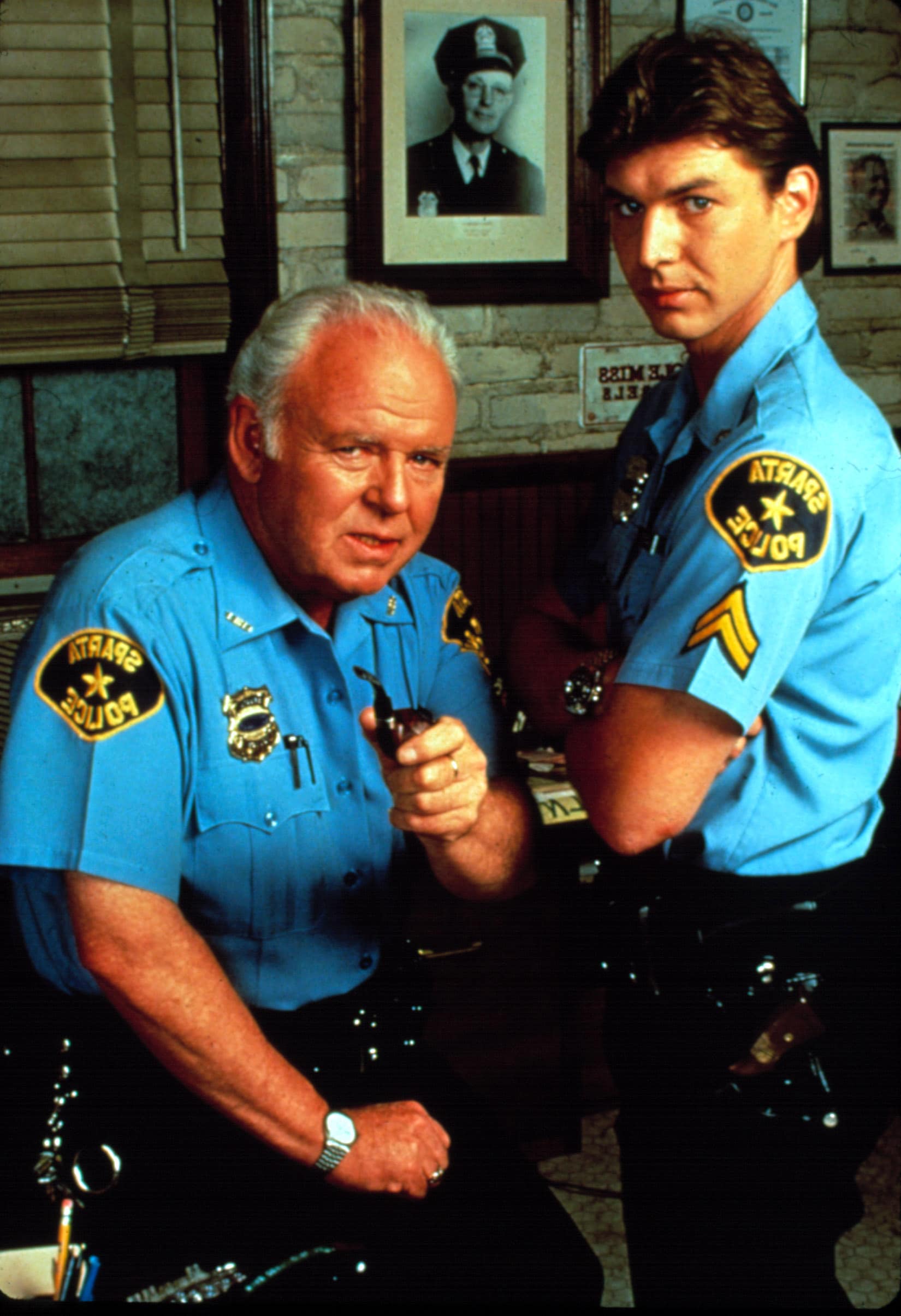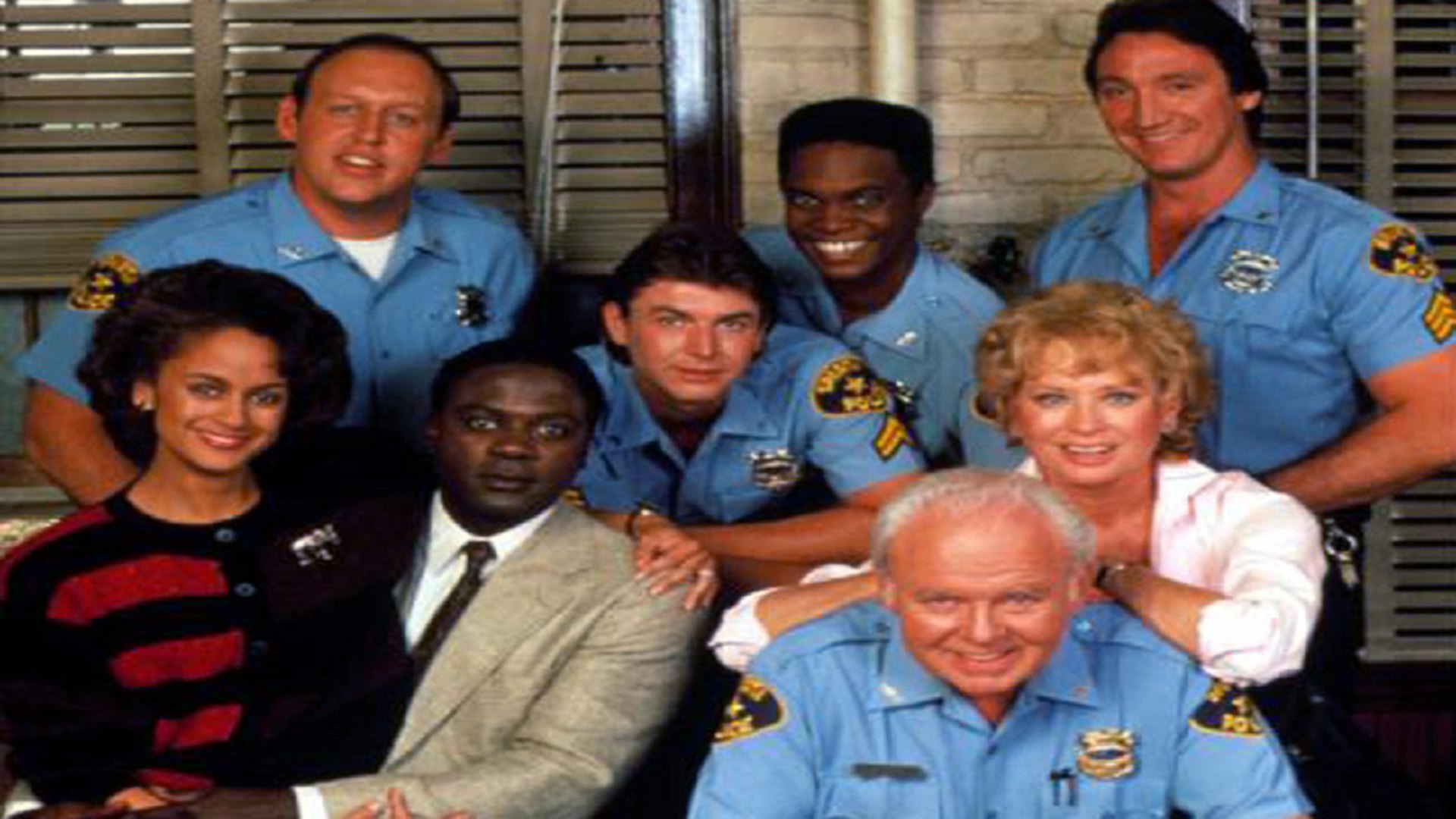Discover The Cast: "In The Heat Of The Night" Movie Stars
Did the casting choices in "In the Heat of the Night" simply fill roles, or did they ignite a cultural conversation that still resonates today? Absolutely, the cast, led by Sidney Poitier and Rod Steiger, wasn't just about talent; it was a deliberate act of social commentary, challenging racial prejudices and reshaping cinematic representation.
The cast of "In the Heat of the Night" includes:
Sidney Poitier as Virgil Tibbs
Rod Steiger as Bill Gillespie
Warren Oates as Sam Wood
Lee Grant as Mrs. Leslie Colbert
James Patterson as Ralph
Directed by Norman Jewison, "In the Heat of the Night" unfolds the narrative of Virgil Tibbs, a black police detective from Philadelphia thrust into the investigation of a murder in a racially tense Mississippi town. The film's dramatic core lies in Tibbs's struggle against the ingrained prejudice of the local police force and the community, a battle he must win to unravel the truth behind the crime.
- Unveiling Aaron Pierres Father The Untold Story Amp Influence
- Is Zach Top Still Married The Truth Revealed
The film resonated deeply with both critics and audiences, earning five Academy Awards, including Best Picture and Best Actor for Sidney Poitier. Its enduring relevance lies in its unflinching portrayal of racial dynamics, solidifying its place as a cornerstone of the civil rights era in cinema.
Each member of the "In the Heat of the Night" cast delivered compelling portrayals, imbuing the film with a raw emotional power that amplified its message of racial prejudice and the urgent need for social justice. Their performances were not mere acting; they were embodiments of the era's complex realities.
| Attribute | Sidney Poitier |
|---|---|
| Full Name | Sidney Poitier |
| Birth Date | February 20, 1927 |
| Death Date | January 6, 2022 |
| Birth Place | Miami, Florida, U.S. |
| Nationality | American-Bahamian |
| Occupation | Actor, director, author, diplomat |
| Years Active | 19472001 |
| Spouse(s) | Juanita Hardy (m. 19501965), Joanna Shimkus (m. 19762022) |
| Children | 6, including Sydney Tamiia Poitier |
| Notable Films | "In the Heat of the Night," "Guess Who's Coming to Dinner," "Lilies of the Field" |
| Awards | Academy Award for Best Actor, Presidential Medal of Freedom |
| Signature Role | Virgil Tibbs |
| Impact | First African American to win the Academy Award for Best Actor; broke racial barriers in Hollywood |
| Website | Britannica - Sidney Poitier |
in the heat of the night cast
The ensemble of "In the Heat of the Night" functioned as a critical component in the film's resounding success. Several key facets illuminate their impact:
- All About Camila Cabellos Weight Health Amp Body Image Now
- Who Is Really Taylor Kitschs Partner All About Her
- Star power: The combined star wattage of Sidney Poitier and Rod Steiger amplified the film's reach and gravitas, drawing audiences eager to witness their compelling performances.
- Chemistry: The palpable chemistry between Poitier and Steiger served as the linchpin of the narrative, showcasing a complex, evolving relationship amidst racial tensions.
- Diversity: The deliberate inclusion of a diverse cast mirrored the societal tensions explored in the film, adding layers of authenticity and depth to the storytelling.
- Authenticity: The actors' dedication to embodying their characters with authenticity ensured that each role resonated with truth and believability, deepening the audience's connection to the narrative.
- Supporting cast: A robust supporting cast provided vital context and nuance to the central conflict, enriching the film's thematic exploration and adding layers of complexity.
- Historical significance: The film's cast played a transformative role in redefining racial representation in cinema, challenging entrenched stereotypes and paving the way for greater inclusivity.
- Cultural impact: Through their performances, the cast ignited a national conversation about racial prejudice and social justice, contributing to a broader cultural awakening and influencing societal attitudes.
In summation, the "In the Heat of the Night" cast proved indispensable to the film's triumphant reception, both commercially and critically. Their collective strength in performance, interpersonal chemistry, and representational diversity coalesced to amplify the film's central themes, leaving an indelible mark on both the cinematic landscape and societal consciousness.
Star power
The magnetic star power emanating from Sidney Poitier and Rod Steiger served as a critical catalyst in propelling "In the Heat of the Night" to unparalleled success. Both actors, at the zenith of their respective careers, masterfully infused their characters with profound depth and multifaceted nuance, captivating audiences worldwide.
Poitier's casting as Virgil Tibbs was particularly momentous, shattering longstanding Hollywood conventions. He emerged as one of the first black actors to helm a major motion picture in a leading role, his performance dismantling racial stereotypes and forging new pathways for subsequent generations of black actors.
Steiger's portrayal of Bill Gillespie proved equally compelling, imbuing the character with a sense of profound realism and intricate complexity. He deftly balanced Gillespie's flaws with moments of empathy, making him a character both relatable and morally ambiguous.
The electrifying chemistry shared between Poitier and Steiger translated into a dynamic on-screen relationship that captivated viewers. Their collaborative synergy amplified the film's central themes, ultimately contributing to its critical acclaim and box-office triumph.
In retrospect, the star power wielded by Sidney Poitier and Rod Steiger proved to be an invaluable asset for "In the Heat of the Night." Their commanding performances not only anchored the film but also cemented its status as a pivotal cinematic achievement of the civil rights era.
Chemistry
The alchemic chemistry between Sidney Poitier and Rod Steiger acted as a powerful engine driving the narrative of "In the Heat of the Night." The actors seamlessly complemented each other, forging a dynamic on-screen relationship that felt both authentic and profoundly engaging.
This palpable chemistry proved essential to the film's overall resonance, lending it a heightened sense of realism and authenticity. Audiences readily accepted the characters of Poitier and Steiger as genuine colleagues, their shared professional bond deepening the film's emotional impact and narrative strength.
Beyond the screen, the rapport between Poitier and Steiger played a significant role in transcending racial barriers. In an era where onscreen portrayals of black and white individuals as equals were rare, their partnership challenged prevailing stereotypes, fostering greater diversity and inclusivity within the Hollywood landscape.
The enduring chemistry between Poitier and Steiger serves as a potent reminder of the transformative power of film to bridge divides and promote mutual understanding. Their legacy lies not only in their individual talents but also in their ability to create a truly memorable and socially impactful on-screen partnership.
Diversity
The multifaceted diversity embedded within the cast of "In the Heat of the Night" transcended mere representation; it served as a deliberate artistic choice by director Norman Jewison to confront entrenched racial stereotypes and foster a deeper understanding of societal complexities.
- Representation of Black Characters
The film's portrayal of black characters extended far beyond conventional stereotypes, offering nuanced portraits of individuals grappling with complex emotions and experiences. Sidney Poitier's portrayal of Virgil Tibbs exemplified this shift, showcasing a black man of intellect, dignity, and unwavering determination. These characters challenged prevailing negative stereotypes, fostering greater empathy and respect. - Depiction of Racial Prejudice
"In the Heat of the Night" unflinchingly depicted the insidious nature of racial prejudice prevalent in the American South during the 1960s. The contrasting characters of Bill Gillespie, played by Rod Steiger, and Ralph, portrayed by James Patterson, embodied the spectrum of white attitudes toward racial integration. Gillespie's initial hostility gradually evolved into reluctant respect, while Ralph's more progressive outlook offered a counterpoint to prevailing biases. - Exploration of Racial Identity
The film delves into the complex and often fraught issue of racial identity, exploring the challenges faced by black individuals navigating a predominantly white society. Virgil Tibbs's experiences as a black man in a racially charged environment underscored the multifaceted nature of identity, highlighting both its sources of pride and potential for conflict. - Impact on Society
The diverse representation within "In the Heat of the Night" exerted a profound and lasting influence on American society. The film sparked critical dialogue about racial prejudice, challenging ingrained stereotypes and paving the way for greater inclusivity in both Hollywood and broader society. Its impact resonates to this day, serving as a reminder of the ongoing struggle for racial equality and justice.
In essence, the diversity of the cast in "In the Heat of the Night" was not merely a superficial element; it formed the bedrock of the film's enduring success, offering a poignant and authentic portrayal of racial tensions while simultaneously promoting understanding and empathy.
Authenticity
The raw authenticity exuded by the actors in "In the Heat of the Night" served as a critical ingredient in the film's overall impact. Their dedication to imbuing their roles with genuine emotion and nuanced understanding rendered the characters remarkably believable and deeply relatable to audiences.
This commitment to authenticity fostered a profound sense of immersion, allowing viewers to fully invest in the unfolding narrative. By portraying characters with such conviction, the actors transcended mere performance, inviting audiences to empathize with their struggles and triumphs.
Furthermore, the actors' authenticity played a pivotal role in dismantling racial barriers, challenging prevailing stereotypes and fostering greater inclusivity within the film industry. By portraying black and white characters as equals, they defied conventional representations, paving the way for more diverse and equitable casting practices.
The enduring legacy of the "In the Heat of the Night" cast lies not only in their individual talents but also in their collective ability to convey genuine emotion and build bridges across racial divides. Their commitment to authenticity continues to inspire and resonate with audiences, reminding us of the transformative power of film.
Supporting cast
In "In the Heat of the Night," the constellation of supporting actors functioned as a vital circulatory system, infusing the film with depth, nuance, and authenticity. These performers, often relegated to the periphery, contributed immensely to the richness and complexity of the narrative, amplifying the impact of the central performances.
- Character Development
The supporting cast played a crucial role in fleshing out the main characters, providing them with compelling motivations and adding layers of psychological complexity. Warren Oates, as the conflicted deputy Sam Wood, provided a nuanced counterpoint to Rod Steiger's initially bigoted Sheriff Gillespie, revealing the subtle nuances of prejudice within the community. - Plot Development
The progression of the film's plot relied heavily on the contributions of the supporting cast. Lee Grant, as the grieving widow Mrs. Colbert, added a layer of suspense and intrigue to the investigation, while also embodying the simmering tensions within the Southern aristocracy. Her nuanced performance kept audiences guessing and heightened the stakes of the narrative. - Comic Relief
Amidst the film's weighty themes, the supporting cast provided welcome moments of levity and humor. James Patterson, as the young black man Ralph, brought a sense of youthful energy and optimism to the screen, offering a counterpoint to the pervasive cynicism and prejudice of the community. - Historical Context
The supporting cast also played a crucial role in grounding the film within its historical context. By embodying the diverse perspectives and experiences of individuals living in the Jim Crow South, they created a vivid and immersive portrayal of a society grappling with profound social change. The actors who portrayed members of the Ku Klux Klan, in particular, conveyed the palpable fear and intimidation that permeated the era.
In conclusion, the contributions of the supporting cast in "In the Heat of the Night" cannot be overstated. Their performances not only enhanced the narrative but also added layers of depth, complexity, and authenticity to the film, solidifying its status as a cinematic masterpiece.
Historical significance
"In the Heat of the Night," propelled by its compelling cast, holds a hallowed place in cinematic history for its transformative impact on racial representation. Released in 1967, during a period of heightened social unrest and civil rights activism, the film dared to challenge entrenched racial stereotypes and ignite a national conversation about equality and justice.
- Breaking racial stereotypes
Prior to "In the Heat of the Night," black actors were often confined to demeaning and stereotypical roles, reinforcing harmful prejudices. The casting of Sidney Poitier as Virgil Tibbs, a sophisticated and highly competent police detective, shattered these barriers, presenting a dignified and multifaceted portrayal of a black man in a position of authority. - Challenging racial prejudice
The film fearlessly confronted the pervasive nature of racial prejudice, exposing its insidious effects on individuals and communities. The evolving relationship between Virgil Tibbs and Sheriff Gillespie, initially fraught with tension and suspicion, ultimately transcended racial divides, demonstrating the potential for understanding and mutual respect. - Influencing future films
"In the Heat of the Night" paved the way for greater diversity and inclusivity in Hollywood, proving that audiences were eager to embrace stories that challenged racial stereotypes and explored the complexities of race relations. Its success inspired subsequent filmmakers to create more authentic and nuanced portrayals of black characters, paving the way for a more equitable and representative cinematic landscape.
In summary, the cast of "In the Heat of the Night" played a pivotal role in shaping the course of cinematic history, challenging racial prejudice and opening doors for greater diversity and inclusivity in the film industry. Their legacy continues to inspire and influence filmmakers to this day.
Cultural impact
"In the Heat of the Night" and its remarkable cast exerted a profound cultural impact, igniting widespread awareness about racial prejudice and social justice in the United States.
- Civil rights movement
Released amidst the burgeoning civil rights movement, the film provided a powerful platform for amplifying the voices of those fighting for equality and justice. The film's positive portrayal of a black police detective challenged ingrained racial stereotypes, demonstrating the capabilities and potential of black individuals to excel in positions of authority and respect. - Racial tensions
The film unflinchingly exposed the racial tensions that simmered beneath the surface of American society, prompting audiences to confront uncomfortable truths about the pervasive nature of discrimination and inequality. By depicting the violence and injustice faced by black individuals, the film helped to galvanize support for the civil rights movement and raise awareness about the urgent need for social change. - Cultural change
"In the Heat of the Night" played a significant role in shaping cultural attitudes and perceptions about race in the United States. The film demonstrated that audiences were receptive to narratives that challenged racial stereotypes and explored the complexities of race relations, paving the way for greater diversity and representation in Hollywood and beyond.
In essence, the cast of "In the Heat of the Night" transcended mere entertainment, becoming agents of social change. Their performances ignited a national conversation about race, challenging prejudice, promoting understanding, and ultimately contributing to a more just and equitable society.
FAQs about "In the Heat of the Night" Cast
This section addresses some of the most frequently asked questions about the talented ensemble that brought "In the Heat of the Night" to life.
Question 1: Who embodied the iconic role of Virgil Tibbs?The legendary Sidney Poitier masterfully portrayed Virgil Tibbs, a black police detective from Philadelphia who finds himself embroiled in a murder investigation in a racially charged Mississippi town.
Question 2: Who played Bill Gillespie, the initially prejudiced white police chief who gradually develops a grudging respect for Tibbs?Rod Steiger delivered a compelling performance as Bill Gillespie, the white police chief whose initial animosity towards Tibbs eventually gives way to a complex and evolving relationship.
These are but a few of the exceptionally talented actors who contributed to the enduring legacy of "In the Heat of the Night".
- Bubba Strait The Untold Story Of The Country Icon
- Unlock The Connection Park Hyung Sik And Park Bo Youngs Story

'In The Heat Of The Night' Cast Then And Now 2021

In the Heat of the Night episodes (TV Series 1988 1995)

TV's classic "In the Heat of the Night" cast gathers for 2015 Heat